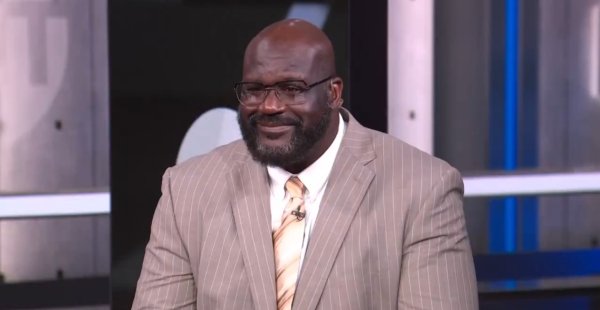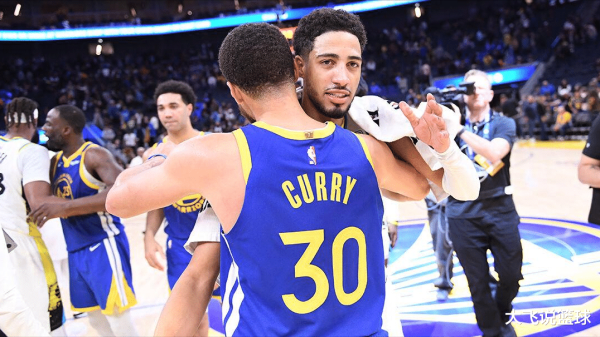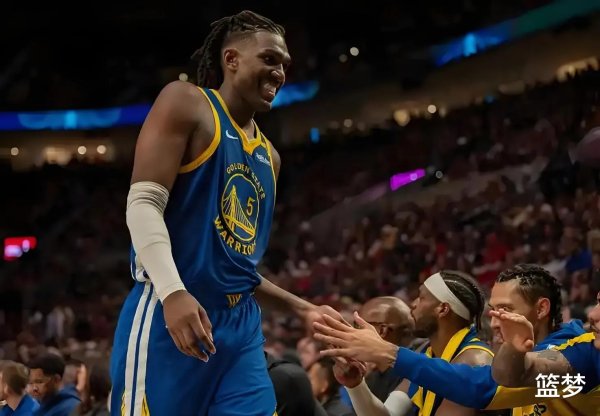HOME > Basketball
Standard equipment for football stars! Those who are double-teamed the most!
7:49pm, 25 October 2025【Basketball】
There are many stars who have been double-teamed in NBA history, but who will be the most ruthless?
Starting from Chamberlain in ancient times, no matter what era it is, it is basically an impossible task to restrict a superstar by defending alone. Therefore, double-team defense has become the most basic respect for dealing with superstars, and it is often the only effective strategy.

Without further ado, let’s take a look at some of the kings of double-teams in the NBA:
James Harden
Peak Harden was in the Rockets, and since Artest opened up the second line of Ren and Du, he took off completely after coming to the Rockets, grasping the scoring organization, and successfully landed among the top ball-handling attackers in the league.
Harden's standard step-back three-pointers and ever-changing dribbling breakthroughs gave opponents headaches. They often sent double teams when he was halfway through the half, forcing him to pass the ball.
In the 2019-20 season, Harden was double-teamed 18.3 times per 100 possessions, ranking first in the league, far exceeding second-place Lillard's 14.1 times. To put it simply, opponents at that time would rather let Harden pass the ball than watch him play alone. They even had double-teams in the All-Star Game, which was outrageous.

Nowitzki
During his peak period in Dallas, King Nowitzki lacked a second ball-holding point most of the time, resulting in him being often double-teamed by his opponents unscrupulously. However, there was a huge contrast in the frequency of double-teams he encountered between the regular season and the playoffs.
There are relatively few double-teams during the regular season, but once the playoffs come, the intensity immediately becomes full. In 2011, he was double-teamed 8.3 times per 100 possessions in the regular season. In the playoffs, it soared to 15.8 times. In the Western Conference Finals against the Thunder, it even reached 18.2 times. The intensity of double-teaming was comparable to the two greats O'Neal and Jordan.
In the 2011 Finals against the Heat, even in the face of double-teaming by James and Bosh, Nowitzki still averaged 26 points and 9.7 rebounds per game, creating the ultimate myth of the German tank.
The frequency of being double-teamed in the playoffs throughout his career is 89% higher than in the regular season, making him the superstar with the greatest contrast.

O'Neal
During the Magic period, one of the Bulls' methods to deal with O'Neal was to first have Luke Longley guard him, and then Jordan would cut the ball or block the shot from behind depending on the situation. It was somewhat similar to the tactic in 1998 when Rodman guarded Karl Malone while Jordan waited for an opportunity to strike.
In the Lakers era, the Spurs developed a shark-cutting tactic:
Bowen deliberately relaxed his defense against Kobe to lure the pass. Once Odell completed the first dribble, Bowen quickly flanked him and formed a triangle with Duncan. If the tactic fails, use the shark-killing tactic immediately.
In the 2000 Western Conference Finals, the Trail Blazers even used four players to shrink in response. As soon as O'Neal received the ball, four players simultaneously pressed the penalty area. Because of this extreme defense, the league introduced the three-second defensive rule in 2001 and even relaxed zone defense, which indirectly led to the decline of traditional centers.

Kobe Bryant
In the Kobe era, every team in the league was well aware of his top-notch singles ability, and the shooting guard also inherited most of Jordan's offensive skills.
When facing the Spurs in the 2006-07 season, Kobe faced up to 51 double-teams in a single game. When facing the Suns in the playoffs, facing Box-1 tactics, the proportion of double-teams in the entire series was as high as 47%, setting a record for forward players.
Even at the age of 34, Kobe is still the focus of opponents. In the last ten games before his Achilles tendon rupture in 2013, he averaged 11.3 double-teams per game.

Michael Jordan
Because the starting point of the attack is closer to the basket, inside players are naturally prone to double-teaming. It is actually normal for the double-teaming rate to exceed 70%. But if among the forwards and defenders, it was Jordan who was double-teamed the most. The frequency of double-teaming by outside players is almost as high as that of the inside giants.
In the era when Jordan was playing, the league had illegal defense regulations that prohibited zone defense. According to ESPN statistics, the proportion of hidden double teams at that time was about 30%. Specifically, in 1998, Jordan was obviously double-teamed 5.1 times per game. If assisting defense is included, the number of double-teams actually reached 7.1 times.
For comparison, Doncic in 2023 is averaging 6.9 times per game on the surface, but after deducting zone defense, there are only 4.8 times left. In other words, Jordan's true double-team frequency is nearly 30% higher than that of today's top ball-handlers.
In the six finals, the average proportion of Jordan being double-teamed was 61.2%, with the highest being 72.1% in 1996 and the lowest being 53% in 1997 and 1998. In comparison, James's average double-team rate in his ten finals was 34.7%, Kobe's average double-team rate in three finals was 46.5%, and Curry's average double-team rate in his first five finals was 48.3%.
So, when it comes to double-teaming, for Jordan, other outside stars are just a piece of cake.

Stephen Curry
Before Curry, there had never been a team in NBA history that started double-teaming stars from beyond the three-point line. But since 2015, double-teaming Curry from outside the three-point line has become the tacit defensive strategy of each team, and even four-person double-teaming has become the norm.
But on the other hand, if Curry is double-teamed, his passing will likely disintegrate the entire defense; if he is not double-teamed, he will be defeated by his lightning-fast three-point shot. Therefore, Curry is regarded as the player with the most hidden double-teams, which also gave birth to the concept of "Curry has gravity".
Some teams will even send two people to prevent Curry from catching the ball when he is running without the ball. When facing the Raptors in the 2019 playoffs, Curry's double-teaming rate without the ball was as high as 41%.
In 2018, Green once said that Curry was double-teamed seven times more often than Durant in the Finals, which once caused Durant's displeasure.. But according to the data, Green even said it was less, because Curry was actually double-teamed 62 times in that round of the finals, while Durant was only double-teamed 3 times. The gap between the two was 20 times.
No matter how you look at it, if "super-long-distance double-teaming" and "off-ball double-teaming" are also included, the defensive pressure Curry endures is definitely at a historical level.

Olajuwon
Olajuwon is one of the centers who has been double-teamed most frequently in NBA history. In the 1995 Finals against the Magic, he was double-teamed by O'Neal and Horace Grant. The double-team ratio was as high as 71%.
At that time, the Sonics developed an SOS defensive tactic. In the 1996 playoffs against the Rockets, they even initiated a double-team without the ball. As a result, Olajuwon only took 7 shots in the first game of the series and scored only 6 points.
According to NBA statistics, he encountered double-teams in 24.7% of his offensive rounds throughout his career, surpassing O'Neal's 22.5%.

Zion Williamson
Since the 2013-14 season, Zion has become one of the players with the highest frequency of double-teaming in the past decade, reaching 28% at one time. The gap between him and the second place is directly equal to the gap between the second place and the 100th place. Although some data may be exaggerated by fans, an article on the NBA's official website pointed out that Zion is the most frequently double-teamed offensive player in the league.
The best evidence is that when he first played in the NBA, he was double-teamed by Popovich when he touched the ball for the first time. It was almost the same as the tactic of slashing the shark back then. The reason why Zion is being double-teamed is because he has absolute dominance in the penalty area. He weighs 129 kilograms and is 198 centimeters tall. Coupled with his rugby-style collision, the opponent's single defense failure rate is as high as 73%.
Some fans may ask, in the face of severe double-teaming, Zion should have a lot of assists, right?
Data shows that Zion should have averaged 9.4 potential assists per game, but actually only had 4.9. The main reason was that his teammates failed to make shots after receiving the ball. The Pelicans have long ranked last in the league in three-point shooting. In the 2023 season, their three-point shooting percentage is only 34.2%, ranking 25th in the league.
If Zion can turn double teams into assists like Antetokounmpo in the future, that will be a sign of truly becoming a super giant.
Related Posts
- In the opening game of the new season, the Clippers fell behind by 24 points in the first quarter. The Jazz shot 16 of 20 in a single quarter. Harden and Paul were in a slump.
- Can Horford No. 42 jersey be retired from the Celtics? US media strongly support: His spirit and leadership are priceless
- Kumingga s farce is getting worse, and the boss Rakob angers Butler, Curry still keeps silent
- The Trail Blazers are 11th, the Spurs are 8th! US media predicts the Western Conference rankings in the new season: Clippers are 5th, Rockets are 3rd, and what are the Lakers?
- Porzingis: If the Celtics don t win the championship, we can exceed expectations in the Hawks
- Causing controversy! Yang Yi: If I were Guo Shiqiang, I would take Yang Hansen. If I don’t fight for the Asian Cup, something will happen.
- Durant Curryton was not Harden s opponent, both of them were almost defeated by the Rockets.
- The Lakers new player debuted: 3D champion + organizational brain, James Luca won the golden puzzle!
- After the Knicks were eliminated, four guesses, one person is the core, Thibodeau was dismissed, the guy touched the ceiling
- The league s first sword aims at the finals! Alexander is in a hot state, Edwards ushers in a life-and-death battle
Hot Posts
- In the opening game of the new season, the Clippers fell behind by 24 points in the first quarter. The Jazz shot 16 of 20 in a single quarter. Harden and Paul were in a slump.
- Can Horford No. 42 jersey be retired from the Celtics? US media strongly support: His spirit and leadership are priceless
- Kumingga s farce is getting worse, and the boss Rakob angers Butler, Curry still keeps silent
- The Trail Blazers are 11th, the Spurs are 8th! US media predicts the Western Conference rankings in the new season: Clippers are 5th, Rockets are 3rd, and what are the Lakers?
Recommend

The most popular rookie show in the past five years: The Lakers stepped on two thunders in a row, Wiseman s talent was wasted the most

Rotary! Gobert becomes a big shark. O Neal was teased in the studio to transform into a well-behaved little fish.

The Pacers really deserve to thank the Warriors, indirectly assisting the three main players, it is really impossible to have no vision for the logo man.

The Trail Blazers are 11th, the Spurs are 8th! US media predicts the Western Conference rankings in the new season: Clippers are 5th, Rockets are 3rd, and what are the Lakers?

The Warriors first contract renewal is almost completed, and the heroes who won the championship are going to stay in the team, only Cole has his instructions

The entry fee is 250 million! The Rockets boss wants to invest in a new project, and Durant may win 24 million less for the championship

Shams: Ivey& Durham& Marcelin& Kessler& Sohan& Watson will not renew their contracts in advance

Congratulations to the Rockets! Two lineups are formed: 3 centers are all in rotation, and 3 veterans with basic salary are on standby at any time